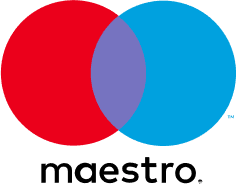
Vientiane Holidays
Current Weather
°C
Today (16-04-2025)
°C
Wind Speed
undefined km/h
Precipitation
undefined mm
Pressure (millibars)
undefined
Visibility
undefined km
Humidity level
undefined %
UV Index
undefined
Payments we accept
Discover the experiences of travellers
Pick you vibes
Top 10 Reasons
FAQ Vibes
Top Package Holidays in Vientiane
Your go-to guide of the best locations to spend your next well-deserved holiday
Best Hotels in Vientiane
Browse a cracking selection of the top-rated stays in vientiane
Top Locations and Iconic Spots to Visit in Laos
A SNEAK PEAK
A Sneak Peak into Vientiane

- Vientiane Holidays emerging holiday destination rich in rich culture, calm riverbank appeal, and a fascinating gastronomic scene is Vientiane, Laos’s charming capital.
- The more well-known Southeast Asian neighbours of Laos sometimes eclipse the capital, Vientiane.
- Still, this energetic city on the banks of the Mekong River has its appeal and is becoming a somewhat unusual holiday spot.
- Vientiane’s well-preserved temples and monuments clearly show her rich in history and culture.
- The magnificent Pha That Luang is a golden stupa and national emblem.
- The city’s several temples, including Wat Si Saket and Wat Ho Phra Keo, provide a window into the nation’s spiritual and creative customs.
- The Mekong River runs elegantly across the city, offering a lovely background for your trip.
- A stroll on the riverfront promenade would be perfect, where one may savour the river vistas and absorb the local life.
- Vientiane’s cuisine is a wonderful blend of Lao and French influences. Try regional cuisine at neighbourhood markets or fancy restaurants, including “larb,” a minced beef salad, and “tam mak hoong,” a green papaya salad.
- The city’s bakeries and cafés, which provide mouthwatering pastries and coffee, clearly show the French colonial tradition.
- Vientiane is a metropolis, although its surroundings offer outdoor possibilities and natural beauty.
- Spend a day visiting Buddha Park, an unusual and magical sculpture garden. You might also ride gently beside the riverfront or enjoy a peaceful boat cruise on the Mekong River.
- Local handicrafts, fabrics, and souvenirs abound at the city’s marketplaces, which are morning and night markets. These are great spots to find unusual memories and presents.
- Vientiane has a range of annual cultural events and celebrations. The Lao New Year, known as Pi Mai Lao, is celebrated with colourful processions, water bottles, and traditional ceremonies that offer cultural knowledge and an opportunity for vivid experiences.
- Book your Holidays to Vientiane with World Holiday Vibes for a stress-free trip; book online ahead of time!
- International Airport: Wattay International Airport (Vientiane International Airport)
- Currency: Lao Kip (LAK) (not Vietnamese Dong)
- Time Zone: Indochina Time (ICT), UTC+7 (No Daylight Saving Time)
- Driving Side: Right-hand side
- Electricity: Voltage: 230V, Frequency: 50Hz / Plugs: Type A, B, and C (two or three-pronged)
- Official Language: Lao. English is spoken in tourist areas but not widely understood outside.
HIGHLIGHTS
Must-See Attractions in Vientiane: Highlights You Can't Miss

- While Vientiane has many tourist attractions, there are also many hidden gems.
- Residents visit the bustling Talat Sao Morning Market for souvenirs, clothes, and fresh food.
- Another hidden gem is Laos’s Textile Museum, which showcases traditional weaving techniques and styles.
- Visitors seeking relaxation can escape the city at Mekong Riverside Park, which has beautiful views of the Mekong River.
- Foodies should not miss the opportunity to sample the city’s well-known street cuisine, including crispy fried chicken and spicy papaya salad.
SEASONS TO TRAVEL
Best Time to Visit Vientiane: Seasonal Guide

- Visiting Vientiane is best between November and February when the cold, dry weather is perfect for outdoor trekking and sightseeing.
- The hottest and driest months are March through May, when temperatures reach 40°C.
- June through October is the rainiest month, and after that, landslides and floods are not unheard of.
- Nevertheless, this is also the period the city celebrates its most significant celebrations, which are vibrant and energetic events highlighting the local culture and customs: the Boun Bang Fai Rocket Festival in May and the Boun Ok Phansa Festival in October.
WORTH A VISIT
Why Vientiane Is Worth Visiting: Top Reasons to Go

Pha That Luang
- One of the most holy locations in this area is this one. Built in this temple, the stupa was built in 1566, when the capital was relocated from Luang Prabang to Vientiane.
- Although this site is thought to have been constructed in the third century, the stupa is known to have been located in 1566 when the capital of Laos was moved to Vientiane out of concern about the Burmese invasion.
- Although this stupa had been damaged several times and suffered many setbacks, it was finally rebuilt in 1963.
- Known to be extended over three storeys, this stupa is said to have a bone as well as the hair of Lord Budha.
- Furthermore well-known for holding the annual Luang festival in location.

Wat Ong Theu
- Built-in the sixteenth century, this temple was sacked in 1827. Once more repaired, it is today recognised as a major hub of Buddhist research.
- This location is well-known among the key sites in Laos where research on Buddha preaching is conducted.
- Originally thought to have been built in the sixteenth century, this site was demolished between 1827 and 1828.
- Later rebuilt in 1929, this location is now considered a national value.
- Though you might not find this spot particularly appealing, you can stroll peacefully through the middle of it.

Haw Phra Kaew
- This location is known to have been named for the former monument it possessed. You would be delighted at this temple constructed around 1565.
- Phra Kew was once said to be housed in this temple, as was the emerald Buddha, which was created from one jade stone.
- Originally designed to let the royal family honour the Emerald Buddha, this site was constructed by the king of those times.
- Once kept at this location, Siam took the emerald Buddha, which is currently found in Bangkok, to a temple of the same name.

Lao Textile Museum
- This Lao museum is one of the best sites where beautiful textiles are showcased to the guests.
- This museum keeps some vintage machinery and ancient textiles utilised in past years.
- Its site features some amazing relics; under its structure lies some machinery never seen.
- It is well known that the cabinets include goods created by minorities of those days.
- Still, these things are steadily degrading and are not being kept much.

National Lao Museum
- It is well known that this two-story building houses many of the relics connected to Laos’s past.
- Designed in 1985, this location is worth seeing for those who enjoy history.
- Built-in 1985, this national museum is well-known for having many artefacts related to Laos’s culture and customs.
- As soon as you enter this site, you will be amazed to find dinosaur bones and pottery created by early humans.
- The top floor is orientated on modernism while the basement half is more interested in ancient history.

Patuxai
- Renowned in Vientiane, the capital of Laos, Patuxai—also known as the Victory Monument—is “Patuxai”, which translates in English as “Gate of Triumph” or “victory gate.”
- This monument is quite historically and culturally important for the people of Laos. Patuxai’s design has a unique Laotian feel and is inspired by Paris’ Arc de Triomphe.
- Patuxai’s inside features a small museum displaying relics and knowledge about the fight for independence and the monument’s construction.
- Both residents and visitors now frequent the Patuxai Victory Monument, which has come to represent Vientiane most famously.
- It reminds us of Laos’s past and the fortitude of its people against colonial obstacles.

Buddha National Park
- Buddha Park has had a fascinating history since 1958. Charming and eccentric priest-shaman Luang Pu Bunleua Sulilat conceived and created the park.
- In 1958, Luang Pu Bunleua Sulilat began developing a vast sculpture park to share his spiritual teachings and creativity.
- Luang Pu Bunleua Sulilat spent years sculpting Buddha Park’s statues and buildings. Over 200 sculptures mix Buddhist and Hindu architectural styles. Every piece was meticulously crafted, representing the priest’s intellectual and spiritual beliefs.
- Besides being creative statements, the park’s sculptures symbolise life, death, and spiritual enlightenment. Due to its many inspirations and peaceful atmosphere, the park is popular with visitors seeking cultural enrichment and peace.
- Buddha Park has been Laos’s spiritual and cultural centre since its inauguration. Visitors and residents are drawn to the park because it shows Luang Pu Bunleua Sulilat’s imagined world and its historical and artistic significance.
DISCOVER MORE
Vientiane Hidden Gems: Discover More Wonders Beyond the Ordinary

Vientiane Night Market
- The night market is one of Vientiane’s most well-known features. Its location is as well known as its food and product offerings.
- The night market is located at Chao Anouvong Park near the Mekong River, which defines Vientiane’s southern limit.
- The city’s residents enjoy Chao Anouvong Park, which offers the ideal perspective and ambience to see the sunset across the river.
- The promenade across the river and through the park provides a gathering spot, a place for exercise, and an area to unwind with a drink and a snack.
- Sunset also marks the time the night market opens. It is open every night of the year from 6 to 10 p.m.
- Still, most vendors won’t open when it’s pouring heavily, so there isn’t much activity.

COPE Visitor Centre
- COPE (Cooperative Orthotic & Prosthetic Enterprise) is a non-profit organisation based in Vientiane, Laos.
- Operating with companies throughout the nation, this rehabilitation institution helps and nurtures all those who have been impacted by landmine explosions, particularly those who have lost limbs.
- They provide prosthetic care and medical services to impacted Laotian citizens, particularly for children, young adults, and older people.
- On your Vientiane tour, it is among the things you should see. Travellers will learn how bombs and landmine explosions during the American war have been influencing the lives of the people living here, even now.
- Exhibits in this interactive site allow one to observe the background of the war and its effects.

Lao National Museum
- Spending a few hours out of the sun at the Lao National Museum, sometimes called the Lao National History Museum, is a great way to learn about Laos’s history, culture, and people.
- Though the museum covers a lot of ground, from prehistoric times to the present, many exhibits are somewhat faded, and the old French colonial building is collapsing.
- Though the collection of artefacts and images is not as extensive or orderly as in a national museum, there are certainly some amazing displays here.
- On the bottom floor, ancient relics abound, including dinosaur bones, pottery shards, and Khmer sculptures tracing the area’s early history.
- The displays upstairs show Laos’s turbulent modern history, from the Siamese invasions and the French colonial period to the American military presence during the Vietnam War and beyond.
- You will find more details here. The struggle for independence and the advent of communism in 1975—which help explain why the museum was first called the Lao Revolutionary Museum—are given great weight.

Phou Khao Khouay National Park
- Phou Khao Khouay National Bio-Diversity Conservation Area, near Vientiane, is a natural beauty and diversity jewel.
- This beautiful national park protects humans and wildlife. Its almost 2,000 square km of ecosystems include calm lakes and rich woods.
- The park has the Indochinese tiger and monkeys. Birdwatchers will find paradise with many birds flying above.
- Phou Khao Khouay offers various trekking routes. Everyone can enjoy a peaceful forest walk or a difficult climb to the park’s highest point.
- Drive through this virgin territory to see hidden waterfalls, panoramic views, and nature’s tranquillity.
- The park’s eco-tourism efforts encourage responsible exploration to preserve the environment.
- Visitors can meet people and discover centuries-old traditions. The park showcases Laos’s culture more than its environment.
- To see Laos’ natural beauty, explore Phou Khao Khouay National Bio-Diversity Conservation Area’s breathtaking scenery and unique fauna.

Nam Ngum Reservoir
- Tucked in the heart of Laos, Nam Ngum Reservoir is a beautiful lake with breathtaking surroundings.
- This large lake typically delights those seeking a peaceful refuge from the busyness of city life.
- Beautiful scenery, abundant vegetation, and undulating hills make it ideal for picnics, coastal walks, and repose.
- Perfect for adventure seekers, the reservoir is also a centre for various water sports, such as boating and fishing, and a visual feast.
- As you explore the area, you will find beautiful sites perfect for capturing amazing images from the sun sinking over the sea or from the bright native vegetation.
- Those who appreciate the outdoors and bird watching will find plenty of species in the surrounding area. Moreover, the nearby towns offer a peek into the local way of life, with opportunities to engage with friendly people and sample Laotian cuisine.
- Nam Ngum Reservoir offers a special experience whether you want to start an adventure, unwind by the lake, or fully appreciate Laos’s rich past.
- Its peace and natural beauty make it a must-see for everyone visiting the area.
CULTURE & TRADITIONS
Vientiane Culture & Traditions: A Guide to Island Life

- A beautiful manifestation of Vientiane culture, Laotian dance combines stories, customs, and beauty.
- These dances, with their elegant motions and vibrant clothing, mirror the rich history and beliefs of the Lao people.
- There is no better way for tourists to experience Laotian culture than to participate in a Laotian dance performance.
- Seeing a dance performance or lesson will open your eyes to the meaning of each movement.
- Additionally, this social activity is transformed when various variants, such as the Lamvong, seek community involvement.
- This commonality keeps the dance alive and enriches the cultural experience.
- Local dance schools also occasionally offer foundational dance seminars. If one stops watching and starts participating, one can learn more about Lao traditions and myths.
- Do not let your curiosity about Vientiane pass without partaking in this enchanted art form.
- Culture in Vientiane offers a glimpse into authentic Laos with its rich tapestry of colourful traditions, mouth-watering cuisine, and genuine communal experiences.
- Every encounter deepens your knowledge of this lovely city, from the magnificent architecture of old temples to the vibrant scene of neighbourhood markets.
- Want to discover Vientiane’s culture? Start by asking or sharing your experiences in the comments!
FOOD FUN FASHION
Vientiane: Where to Eat, Play, and Shop in Style

Food
- Laotian cuisine combines distinctive tastes and influences, emphasising fresh foods and strong spices.
- Among the must-try foods in Vientiane are the spicy papaya salad, laap—a minced meat salad—and khao piak sen, a noodle soup featuring chicken or pig.
- For those with a sweet taste, coconut pancakes and sticky rice with mango are rather common selections.
- From the Kua Lao restaurant to the Makphet restaurant to the Night Market, Vientiane boasts many eateries and street food sellers offering great native cuisine.

Fun
- Vientiane, the capital of Laos, offers much to enjoy. Although the city was a former French colony, it clearly shows a significant French influence in its architecture and gastronomy.
- However, Vientiane is also a city of contrasts where contemporary malls mingle with historic temples.
- Considered the national symbol of Laos, the Pha That Luang is a golden stupa at one of the city’s most important sites.
- You can also visit Buddha Park, Patuxai Victory Monument, and Wat Si Saket temple. For visitors wanting to experience Laos’ true side, Vientiane is noted for its laid-back ambience, friendly locals, and historical and cultural treasures.

Fashion
- Vientiane’s Night Market is a must-see for anyone wishing to engage with the local culture.
- Along with a great range of mouthwatering street cuisine, it highlights traditional handicaps and souvenirs.
- Local delights like Larb and Sticky Rice, which capture the basic tastes of Laotian cuisine, will tempt you as you meander over the market.
- And the market is bustling, so you can meet friendly folks who want to converse.
- While there, haggle! This fascinating activity will help you understand Vientiane culture and the artists who manufacture these exquisite things.
NATURE & SAFARI
Vientiane Nature Escapes: Explore Marine Life and Wildlife

- Visitors of Vientiane can indulge in a distinctive shopping experience combining modern boutiques with traditional markets.
- There is something for every taste and budget, from the busy Morning Market, where you can haggle for locally made handicaps and fabrics, to the chic boutiques along Setthathirath Road, which sell brand clothes and accessories.
- At the night market along the Mekong River, you can sample street food, browse for mementoes, and enjoy live music and entertainment.
- Vientiane’s retail sector will thrill and astound you whether you’re looking for classic Laotian antiquities or modern fashion items.
EVENTS & FIESTAS
Vientiane Festivals and Events: When to Join the Celebration

- One exciting approach to exploring Lao culture is celebrating holidays in Vientiane.
- Many events honouring rich customs, music, and dance abound annually.
- For the Boun Pi Mai (Lao New Year), celebrations abound in water blessings and vibrant parades.
- Apart from highlighting customs, these gatherings invite guests to engage in different activities.
- Participating will let you become part of the local community and feel the friendliness of Lao people.
- Thus, celebrations in Vientiane bear evidence of the resiliency and depth of the Vientiane Culture.


















